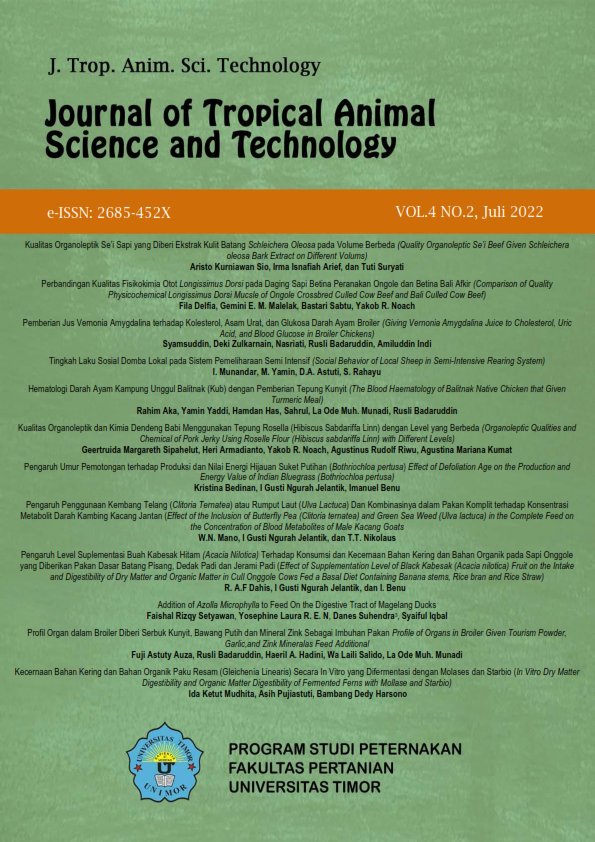Organoleptic Qualities and Chemical of Pork Jerky Using Roselle Flour (Hibiscus sabdariffa Linn) with Different Levels
DOI:
https://doi.org/10.32938/jtast.v4i2.2662Keywords:
Fat oxidation, Jerky, Organoleptic, Pork, Roselle flourAbstract
This reseach aims to examine the effect of using rosella flour (Hibiscus sabdariffa Linn) on the chemical and organoleptic qualities of pork jerky. The materials used consist of pork, rosella flour and kitchen spices (garlic, onion, coriander, pepper, ginger, cumin, galangal, salt, brown sugar, granulated sugar and tamarind). The experimental design applied was completely randomized design (CRD) with 4 treatments and 3 replications.The treatments consisted of R0= without rosella flour, R1= 5% rosella flour, R2= 10% rosella flour and R3= 15% rosella flour. Parameters observed included color, taste and fat oxidation. The result of statistical analysis showed that the use of rosella flour in pork jerky had a very significant effect (P<0.01) on taste scores and fat oxidation but no significant effect (P>0.05) on color scores. It can be concluded that the use of rosella flour can increase the score of taste and fat oxidation while the color score of pork jerky does not change. The highest taste score at the 15% level and the lowest fat oxidation value at the 5% level.























